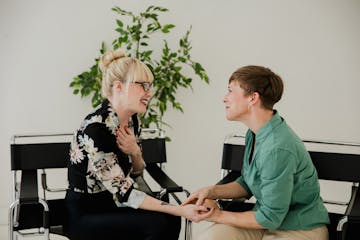Öst Applied Relaxation is a psychological technique developed by Lars-Göran Öst, a Swedish clinical psychologist specializing in the treatment of anxiety disorders. This technique has been shown to be effective in managing anxiety, stress and other mental health conditions. Throughout this article, we will explore in detail the characteristics, phases and components of Öst Applied Relaxation.
Characteristics of Öst Applied Relaxation
Öst Applied Relaxation is based on principles of exposure therapy, but incorporates elements of progressive muscle relaxation. This technique focuses on teaching individuals to face their fears and anxieties gradually and systematically, while learning to physically relax. Through regular practice, patients can reduce their anxiety levels and improve their ability to cope with stressful situations.
One of the fundamental characteristics of Öst's applied relaxation is its integrative approach, which combines exposure strategies with relaxation techniques. This combination allows individuals to confront their fears in a controlled manner, while learning to relax to counteract anxiety that may arise during the process.
Benefits of Öst Applied Relaxation
The The benefits of Öst's applied relaxation are numerous and cover both the physical and psychological realms. Some of the most notable benefits include:
- Reduction in anxiety and stress.
- Improvement in sleep quality.
- Increased feeling of control over one's own emotions.
- Strengthening of coping ability.
- Improvement in concentration and focus.
- Promotion of relaxation and relaxation general well-being.
Phases of Öst's applied relaxation
Öst's applied relaxation consists of several phases that are carried out progressively throughout the treatment . Each phase has specific objectives and contributes to the development of coping and relaxation skills in the individual.
Phase 1: Initial evaluation
In this stage, the therapist performs a thorough evaluation of the anxiety and triggers of the patient. Symptoms, situations that generate anxiety, and associated physical and emotional responses are explored. This evaluation is essential to design a personalized treatment plan adapted to the individual needs of the patient.
Phase 2: Education about anxiety and relaxation
In this phase, the therapist provides the patient with information about how anxiety works, its effects on the body and mind, and the importance of relaxation as a coping strategy. The patient learns relaxation techniques, such as deep breathing and progressive muscle relaxation, which will be essential in the later stages of treatment.
Phase 3: Establishment of exposure hierarchy
In At this stage, the patient and therapist collaborate to identify a hierarchy of feared situations, from those that generate low anxiety to those that generate high anxiety. This hierarchy will serve as a guide for gradual and systematic exposure to situations that generate anxiety, while practicing the relaxation techniques learned in the previous phase.
Phase 4: Exposure to feared situations
In this phase, the patient begins to expose himself in a controlled manner to the feared situations in the previously established hierarchy. During these exposures, the patient practices relaxation to counteract any anxiety that may arise. Over time and repeated practice, the individual experiences a reduction in the intensity of anxiety and learns to cope with challenging situations more effectively.
Components of Öst Applied Relaxation
Öst Applied Relaxation is made up of several key elements that collaborate in the therapeutic process and in the development of effective coping skills. These components include:
- Gradual exposure: Gradual exposure to feared situations is a fundamental component of this technique. Through controlled exposure, the patient learns to face his fears and reduce his feeling of threat in stressful situations.
- Progressive muscle relaxation: The progressive muscle relaxation technique, which consists of tensing and relaxing the muscles sequentially, helps the patient reduce physical tension and generate a state of deep relaxation that counteracts anxiety.
- Deep breathing: The Deep breathing is used to calm the nervous system and reduce the physiological arousal associated with anxiety. Through conscious and controlled breathing, the patient can reduce the fight or flight response in stressful situations.
- Self-control and coping: Öst's applied relaxation encourages the development of Self-control and coping skills to manage anxiety and stress in everyday life. The patient learns to identify his thoughts and emotions, and generate adaptive responses to challenging situations.
A Few Last Words
In short, Öst's applied relaxation is a therapeutic technique Effective for the treatment of anxiety and stress. By integrating controlled exposure with progressive muscle relaxation, this technique helps individuals confront their fears and learn to relax in challenging situations. With a structure based on specific phases and components, Öst Applied Relaxation offers a comprehensive and systematic approach to managing anxiety and strengthening coping skills.
Author: Psicólogo José Álvarez


